The Angel Wing Begonia is a hybrid cane begonia that came about due to a cross between Begonia aconitifolia and B. coccinea. This cross-breeding was carried out in 1926 by Eva Kenworthy Gray, a California plant breeder.
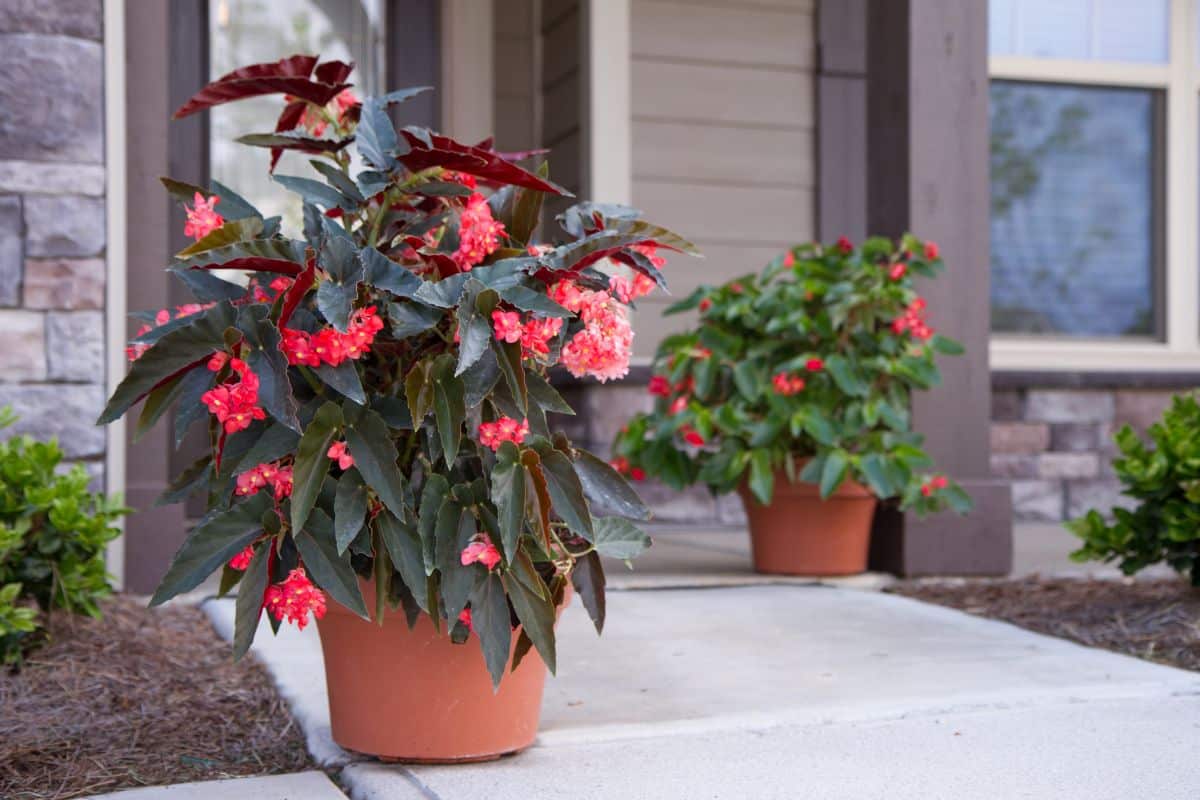
The Angel Wing Begonia is known for its sweet-tart taste and pointed leaves, from where it derives its name. Its stems are solid and stiff, and it is a popular indoor plant that can be grown all year round.
This angel wing begonia growing guide will teach you everything you need to know about caring for the plant.
Let’s get started!
Jump to:
Angel Wing Begonia Growing Guide
| Common Names | Angel Wing Begonia |
| Scientific Name | Begonia coccinea |
| Family | Begoniaceae |
| Plant Type | Perennial shrub |
| Mature Size | Between 12-30 inches in height, between 12-24 inches in width |
| Sun Exposure | Partial shade |
| Soil Type | Well drained but moist |
| Bloom Time | Summer, early fall |
| Flower Color | White, pink, red, orange |
| Hardiness Zones | 10-11 (USDA) |
| Native Area | South America |
| Toxicity | Toxic to dogs and cats |
Although a hybrid begonia flower, Angel Wing Begonia, grows in the tropics or sub-tropical climates, it can also grow in temperate regions. This flower is not difficult to grow as long as one meets the suitable condition for it to thrive.
This plant grows relatively quickly, with noticeable growth visibility within six weeks. Read on to find out these conditions in this Angel Wing Begonia growing guide so that you can have your Angel Wing Begonia flourishing without stress.
Angel Wing Begonia Watering Requirements
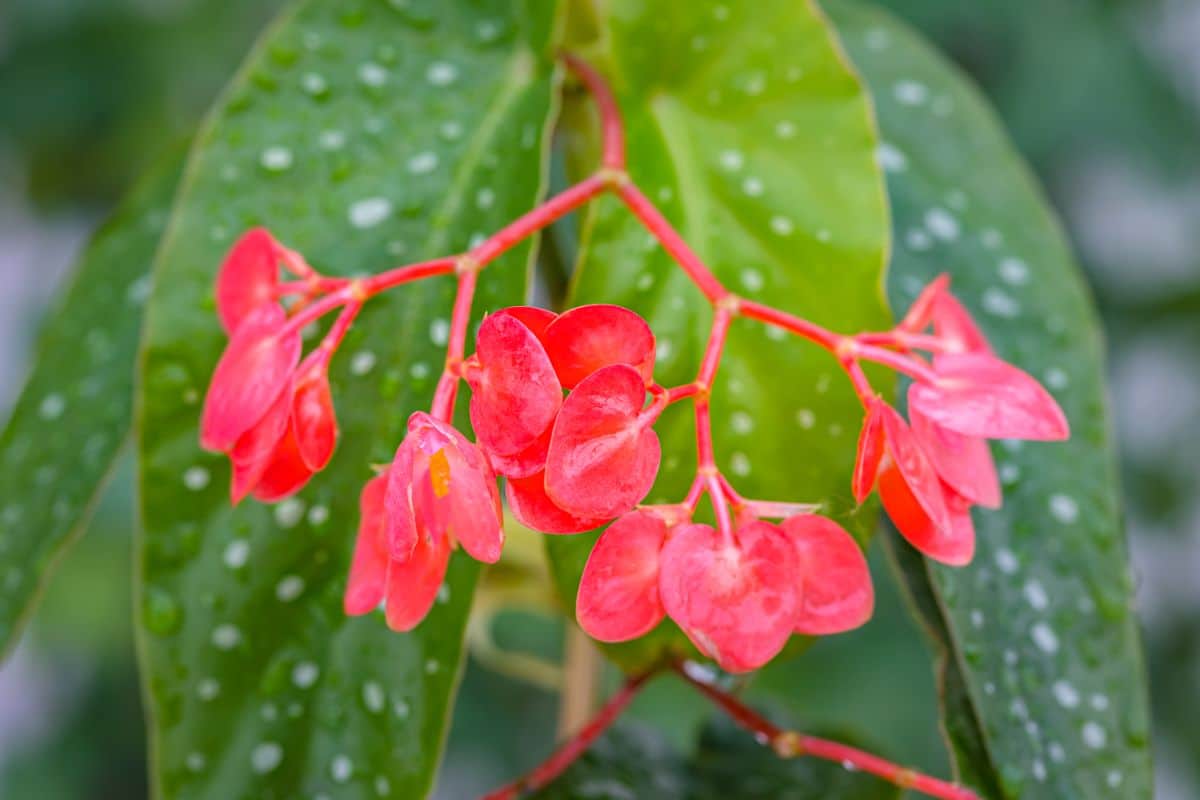
Your Angel Wing Begonia requires a lot of watering and misting to grow; else, it will turn brown significantly if you are growing it in a pot. Yet, you must not overwater the plant to prevent powdery mildew from forming on its leaves.
Do not overwater to the point where the Angel Wing Begonia will be resting inside a pool of water.
Between spring-fall, water the plant frequently, especially if it has bloomed. During this season, the soil should remain slightly moist to the touch. However, during winter, you want to reduce the watering and allow the topsoil to get dry before watering it all over again.
Soil Requirements
Angel wing begonia grows best in a soil mix that is light, aerated, moisture-retentive (but not soggy), and rich in organic matter. A somewhat "heavy" soil will let the plant's vast root system establish itself well and adequately support its tall stems.
To ensure the plant's soil does not get soggy, grow angel wing begonia plants in a pot made from clay or terracotta to help drain excess moisture. An excellent mix you can try is peat moss, perlite or vermiculite, humus, and a bit of sand.
It will provide the plant with a moist substrate and help prevent overwatering issues by allowing good drainage. It will also give the plant the nutrients it needs to bloom, and begonia houseplants can also be grown in an African violet commercial mix.
Angel Wing Begonia Temperature and Humidity Requirements
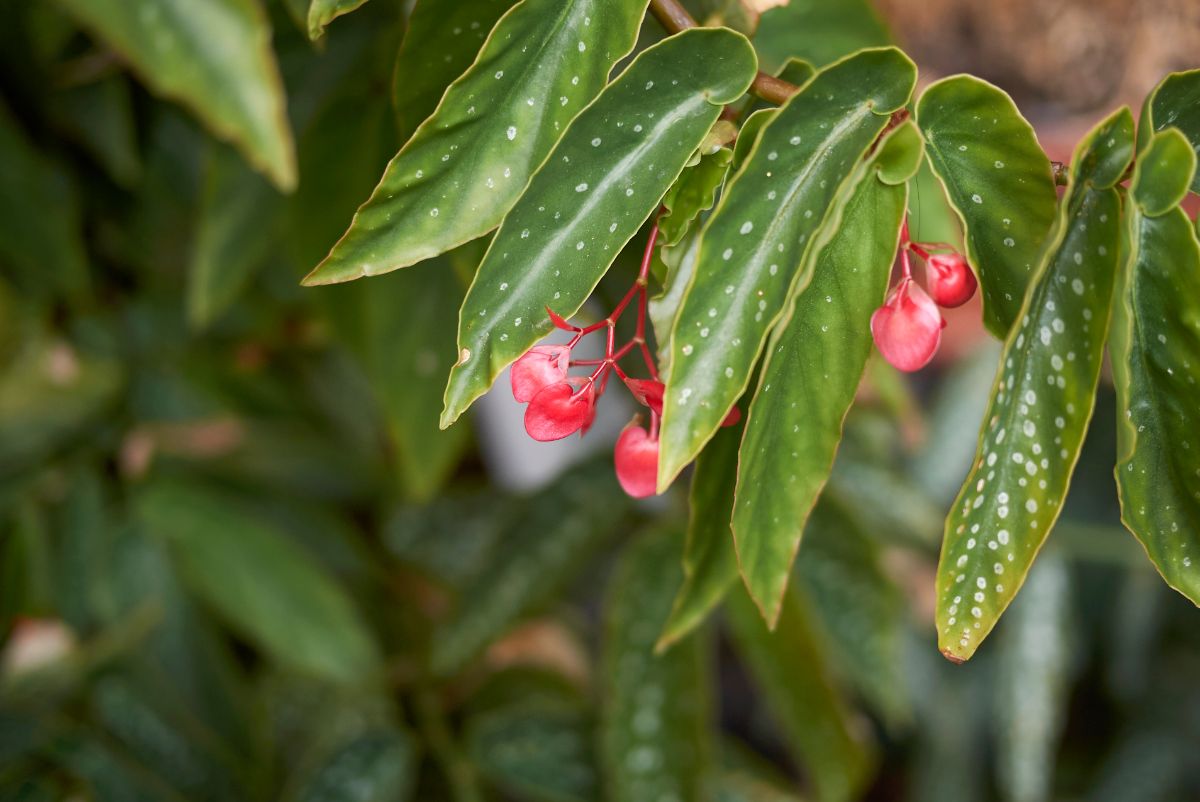
Keep temperatures up if you wish to grow the plant inside your home. Angel wing begonia does best in an environment that ranges from 18 degrees to 24 degrees Celsius. The foliage could damage if it dips below 12°C and if lower than 10 degrees, you risk the plant dying altogether.
We also recommend keeping the plant away from any rough drafts or breezes, such as those from an air conditioner during the summer or an open window in the winter. Aside from comfortable temperatures, angel wing begonia is a humidity-loving plant.
You want to mist the plant regularly to maintain its moisture levels and ensure you keep it in a typically humid room in your home. Your kitchen or bathroom is a good location.
If your home is frequently dry, you can invest in a small space humidifier to a place near your plant. You can also place the pot on top of a pan of pebbles that contains water if you do not have a humidifier. But ensure the pot is suspended above the water, not set in it.
Fertilizer Requirements
Angel wing begonias are heavier feeders than the other begonia varieties. We recommend using a liquid, balanced fertilizer with a 10-10-10 nutrient ratio. For weekly applications, dilute the fertilizer to a quarter of the strength recommended on the label or to half-strength if you plan to use it twice a month.
Scratch the fertilizer gently into the soil and water thoroughly, so the fertilizer prills begin slowly degrading, releasing the nutrients.
During the blooming season, which is usually in late winter or spring, you can switch to a high-phosphorus fertilizer to increase the chance of flowering.
Angel Wing Sunlight Needs
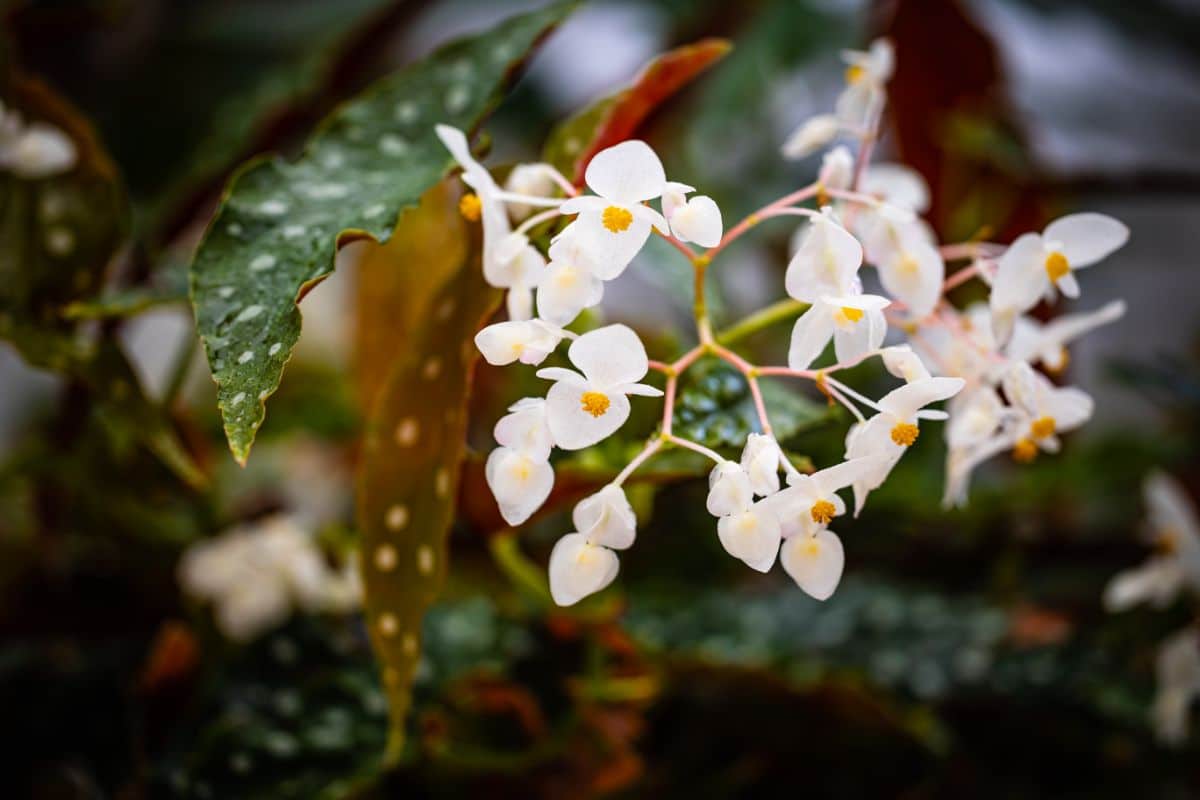
Angel wing begonia needs bright indirect light to grow. Giving the plant enough sunlight is essential if you want it to flower. An angel wing begonia growing in the partial shade won’t bloom.
In addition, it will develop long, bare stems, giving it a leggy look. Yet, avoid placing the plant in direct sunlight, as this will result in scorched leaves.
Please note that a north window may not provide enough light for these plants to flower. The ideal spot for an angel wing begonia, however, is a room with eastern or western exposure. It will ensure that the plant receives enough light throughout the day.
You can also keep it in a room with southern exposure, but place it at least three feet away from the window. Also, the leaves can quickly develop burn marks from too much sun.
Pruning
Pruning is critical to keeping your angel wing begonia healthy and growing. You must ensure you prune away any dead or dying leaves or stems so your plant can redirect its energy to healthy new growth.
It’s also important to prune off dead or dying flowers so the plant can keep growing fresh blossoms. It is called deadheading.
Pruning can also help make the plant bushier. If your plant is getting leggy and you want it to grow more leaves closer together, pruning can help you attain this. This can be done by pruning the plant branches just above a node to promote more branching and leaf growth.
You can equally pinch off the ends of growing stems to get the plant to branch out in that area.
It is important to note that even with pruning, angel wing begonias will benefit from trellises or support poles to help keep the plant's long canes from resting under the weight of the large leaves.
It’s also good to prune when potting a new plant. Simply cut it back to half so that it will put its energy into producing roots instead of trying to support a sizeable above-ground section. Finally, always clean your pruning shears between cuts to prevent transferring diseases from one plant to another.
Angel Wing Begonia Repotting

All begonias, including Angel Wing Begonias, like being a bit pot-bound, so you don’t have to repot them too often.
However, you can repot the plant any time of the year, but it’s best done during the active growing period in spring or early summer, as in winter, growth slows down. The warmer weather and more extended daylight will help encourage new growth.
When you lift the pot of your plant and notice roots coming out through the drainage hole, repot into another container one size larger than the previous one. Avoid repotting your begonia if it’s started flowering, as this will shock the plant and cause it to drop its blooms.
Pests
Your angel wing begonia is susceptible to the aphid, spider mite, and mealybug infestations. Some common signs of an aphid infestation in angel wing begonia are small flies crawling underneath the foliage or flying around the plants.
You can notice spider mites on your plant by looking for web-like thread hanging from stems and leaves. Spider-like mites can be black or red tiny pests.
You can get rid of houseplant pests using a neem oil spray. Mix 2 tablespoons of neem oil, one tablespoon of liquid castile soap, and 1 liter of water in a spray bottle. Shake to combine the ingredients.
Thoroughly douse foliage once a week to eliminate plant bugs and mites. Continue applying the neem oil until all signs of pests are gone.
Angel Wing Begonia Diseases
Diseases associated with Angel wing begonia plants include:
1. Powdery Mildew
When begonias are afflicted with this fungal disease, they first develop circular spots of what looks like white powder.
As the fungus increases, the spots get larger until the plant appears covered with powdery dust. Powdery mildew can be controlled by pruning the affected foliage as soon as possible.
That said, it’s worth noting that even a mild case of powdery mildew can injure an angel-winged begonia. Once the affected vegetation and any leaf litter have been removed, spray the plant with a fungicide prescribed for use on powdery mildew.
2. Botrytis
Botrytis is a fungal disease that results in the splotches of the angel-winged begonia becoming soggy and brown. If left untreated, these saturated brown areas will spread to other areas of the plant and eventually kill, leading to its death.
Botrytis is a symptom that indicates that you need to trim the interior of your plant to enhance air circulation and stop overhead watering.
To stop the disease from spreading, prune the brown spots out of the plant or cut the affected cane off, then use methylated spirits to sterilize the cut. Finally, remove any dropped leaves or flowers--they may harbor fungal spores.
3. Stem Rot
Stem rot is generally caused by a fungus that enters the crown of the begonia via a wound in the plant. When established inside the plant tissue, stem rot eats away at it, softening and making it unable to support the plant’s weight.
The stems will collapse eventually, and sadly, there is no cure for stem rot, and you should get rid of infected plants as soon as possible to stop the spread of the disease.
Angel Wing Begonia Toxicity
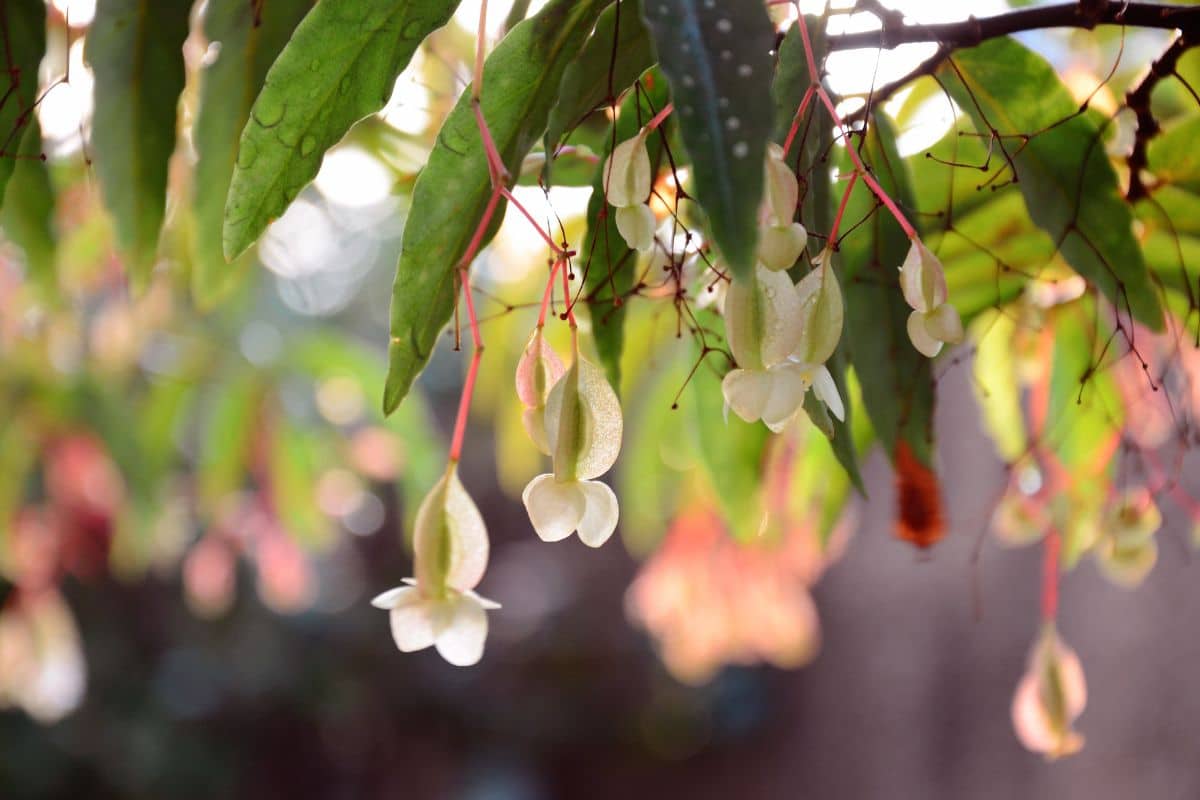
While begonias are not poisonous to humans, you should be careful with letting your pets eat begonias. The begonias tubers poison household pets, such as dogs and cats. It contains insoluble oxalates that can kill dogs and cats.
If you have playful pets, we suggest not placing begonias in attractive places as they may endanger your pets. Instead, put your begonia plants in hanging pots.
Hopefully, all the conditions required for your Angel Wing Begonia to flourish have been addressed, even if you’re a beginner.
Let us go over the necessary conditions one more time:
- Angel wing begonia needs a lot of humidity, well-draining soils, and regular watering and fertilizer applications.
- Bright indirect light is ideal for this plant if you want it to bloom.
- Pruning can help make your plant bushier
- It's more advisable to repot your plant during summer, however, do not repot when it starts to produce flowers.
- It can be susceptible to root rot, powdery mildew, and pests like spider mites and mealybugs.
- Angel wing begonia plants are toxic to pets.
Thank you for reading this post! I hope it helps you to keep your plants healthy and beautiful!




